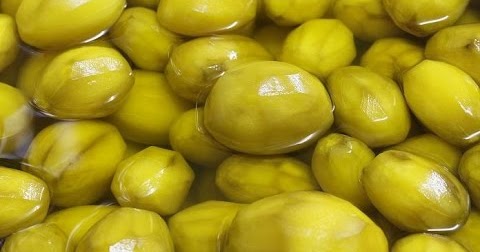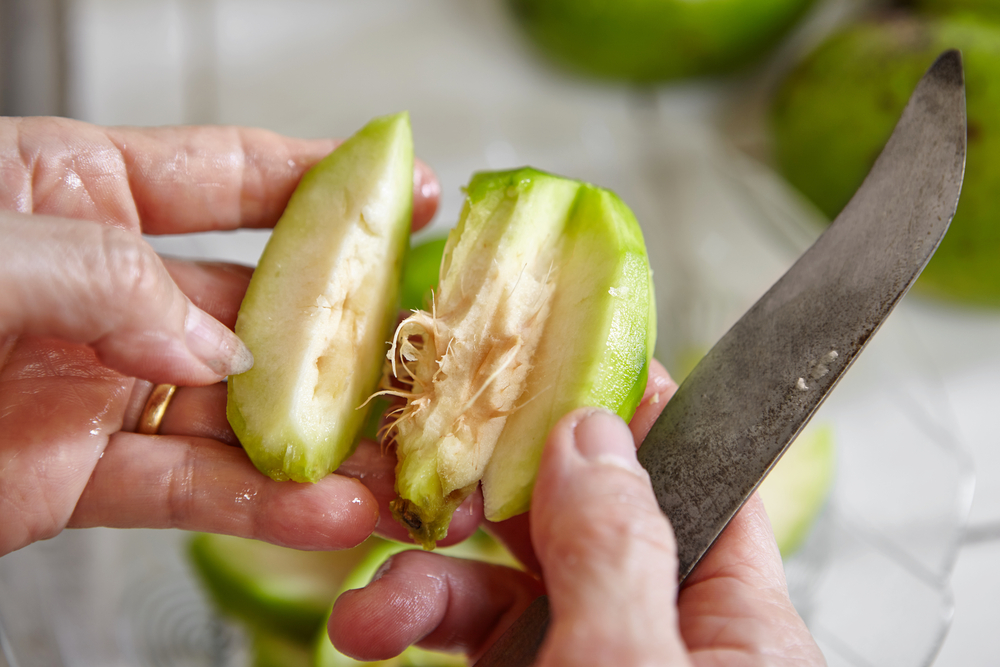Kedondong (Spondias dulcis) is a tropical fruit that grows in equatorial climates throughout the world, including Indonesia. It is also known as ambarella or Spanish plum. The tree is native to Southeast Asia, and it is widely cultivated in Indonesia, Malaysia, India, Sri Lanka, and some parts of Africa and Southern America for its fruits and leaves.
The fruit is oval in shape, green in color with a tough skin. The flesh of the fruit is hard and contains a fibrous pit. It will turn into golden-yellow when it ripens, with flavors of pineapple and mango. The hard crunchy flesh is sour and thus, it is often eaten raw with salt, chili powder, sugar or shrimp paste. However, the ripened fruit tastes the best and has fragrant aroma. The Kedondong’s season of availability varies depending on where it is grown; but in Indonesia, it’s available all year long.

In Indonesia, Kedondong is processed into a wide variation of food. Kedondong is commonly used as ingredients of Rujak (Indonesian fruit salad), served with sauce made of palm sugar, chili, peanut, and shrimp paste. In West Java, Kedondong’s young leaves are used as seasoning for pepes (steamed dishes made of fish, chicken, tofu, or other ingredients). Kedondong fruit is also often preserved into manisan (kedondong pickle) by boiling the fruit with sugar and salt. Kedondong juice is also widely popular, and it’s very delicious and refreshing!
If you buy Kedondong that needs further ripening, you can have it stored at room temperature. In a few days the green skin will turn yellowish and the fruit be ripen. When kept in the refrigerator, it will come for weeks. The fruits that ripen on the tree taste the best.

When peeling or cutting the Kedondong, you have to watch out for its pit. You can peel the fruit first using fruit knife, wash it under running water, and cut the flesh. You can cut the flesh lengthwise, leaving the pit.
Health benefits
The leaves and the bark of Kedondong are widely used as a therapeutic agent due to its flavonoids, saponin, and tannins contains. The fruit is dense in nutrients and improves overall health, such as:
Boosts immune system
Kedondong is rich in vitamin C. It improves the function of the immune system. It also improves the formation of collagen and accelerates the wound healing process.
Helps treat cough
The leaves extract of Kedondong are used to treat cough. You can make the solution with the leaves or the fruit. To make the solution with the leaves, you can boil 3 or 4 fresh leaves of Kedondong tree in two cups of water, and allow it to stand for a few minutes. The concoction is strained and usually taken with honey.
The other method is by shredding two or three pieces of Kedondong. Squeeze the water using clean cloth, and add a pinch of salt to the Kedondong juice.
Treats digestive problems
Kedondong is high in dietary fiber, which facilitates digestion and helps clear the bowel. The pulp of the fruit is recommended for those who suffer with constipation and indigestion. The high water content of the fruit also prevents dehydration, which also aids in digestion.
Source of energy
The fruit is high in sugar mainly in the form of sucrose, which provides instant energy. Kedondong is a natural and wholesome way to boost vitality and endurance.
Helps in weight loss
Kedondong is low in fat, carbohydrate, and high in dietary fiber; but it still provides required nutrients for your body. Just remember to consume it fresh, not in syrup!




